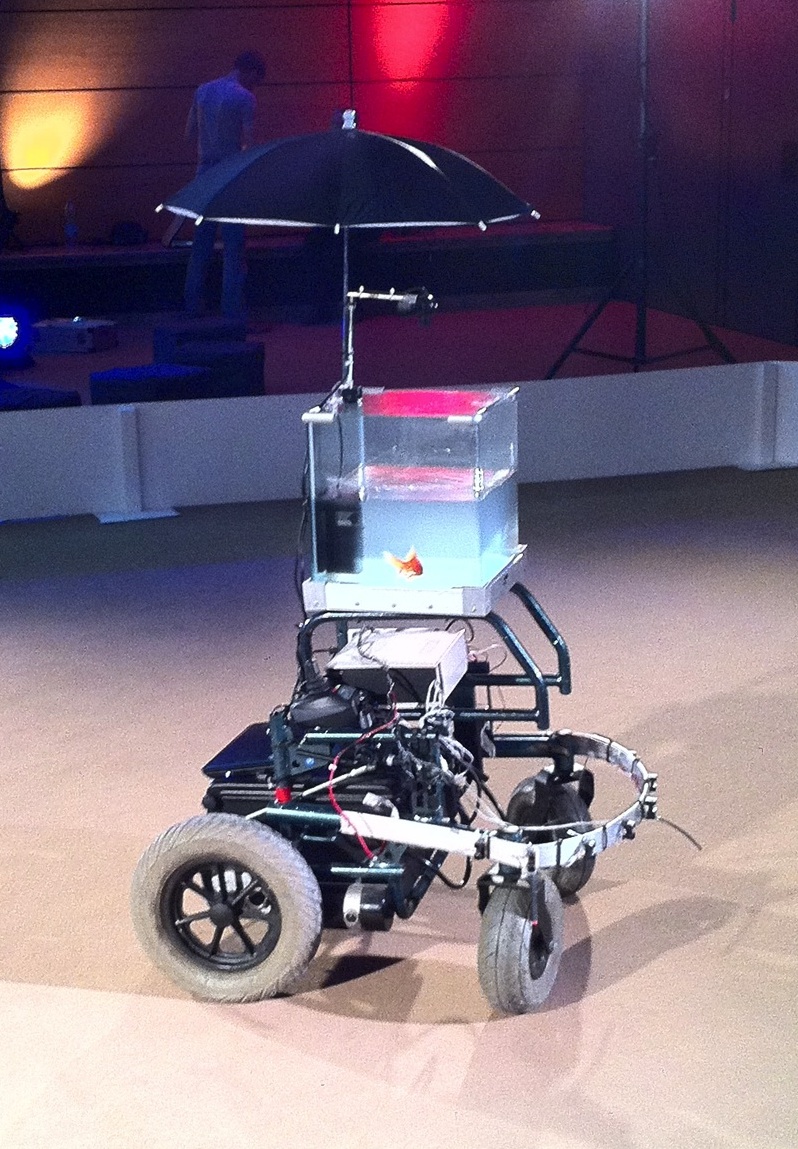
Wow! This is a masterful book.
Levy reports on three different eras that have shaped modern computing:
- The group of hackers at MIT in the early sixties who were the first to use computers for anything other than computing things (the first computer game, the first chess computer, the first time that a computer is connected to a robot, etc.) and created a culture, the hacker ethic, in the process.
- The people around the Homebrew Computer Club in California in the early seventies who were the first to create hardware at a scale that could work for hobbyists and in households
- A group of Apple and Atari enthusiasts (fanatics?) who invented whole new genres of gaming and birthed the modern game industry in the early eighties.
Levy is an excellent writer (you have read In The Plex, haven’t you?) and through his writing I was immediately and completely awed by the brilliant playfulness of these geniuses.
The hacker ethic is something that still today has tremendous value. Levy teases out these principles from the MIT culture that he investigates:
- Access to computers—and anything that might teach you something about the way the world works—should be unlimited and total. Always yield to the Hands-On Imperative!
- All information should be free.
- Mistrust Authority—Promote Decentralization. (From the book: “Bureaucracies, whether corporate, government, or university, are flawed sys-tems, dangerous in that they cannot accommodate the exploratory impulse of true hackers.”)
- Hackers should be judged by their hacking, not bogus criteria such as degrees, age, race, or position.
- You can create art and beauty on a computer.
- Computers can change your life for the better.
Paragraphs like this:
As for royalties, wasn’t software more like a gift to the world, something that was reward in itself? The idea was to make a computer more usable, to make it more exciting to users, to make computers so interesting that people would be tempted to play with them, explore them, and eventually hack on them. When you wrote a fine program you were building a community, not churning out a product.
made me understand more fully why Richard Stallman is so pained thinking about what we lost. Greenblatt is also pretty vocal:
The real problem, Greenblatt says, is that business interests have intruded on a culture that was built on the ideals of openness and creativity. In Greenblatt’s heyday, he and his friends shared code freely, devoting themselves purely to the goal of building better products. “There’s a dynamic now that says, ‘Let’s format our web page so people have to push the button a lot so that they’ll see lots of ads,‘” Greenblatt says. “Basically, the people who win are the people who manage to make things the most inconvenient for you.”
Some things haven’t changed though. Go to places like Fosdem and you realize that the following is still the case:
It is telling, though, to note the things that the hackers did not talk about. They did not spend much time discussing the social and political implications of computers in society (except maybe to mention how utterly wrong and naive the popular conception of computers was). They did not talk sports. They generally kept their own emotional and personal lives—as far as they had any—to themselves. And for a group of healthy college-age males, there was remarkably little discussion of a topic, which commonly obsesses groups of that composition: females.
There is a lot of hacker wisdom:
[..] An important corollary of hackerism states that no system or program is ever completed. You can always make it better. Systems are organic, living creations: if people stop working on them and improving them, they die.
This book was written in the mid eighties and discusses some topics that are still relevant today. Read the following paragraph and think about the current battle between Android and iOS: hackers insist
[..] that when manuals and other “secrets” are freely disseminated the creators have more fun, the challenge is greater, the industry benefits, and the users get rewarded by much better products.
We also encounter Bill Gates and Steve Jobs right at the start of their companies. I thought it very was very funny how already then they showed something of their later self: Gates was complaining publicly in 1976 how everybody was just copying his version of Altair Basic without paying for it and Jobs was already purely focused on marketing, the user experience and what the actual hardware would look like (even when you opened the Apple 2, it had to look neat and accessible).
We absolutely have to thank O’Reilly for republishing this classic!







